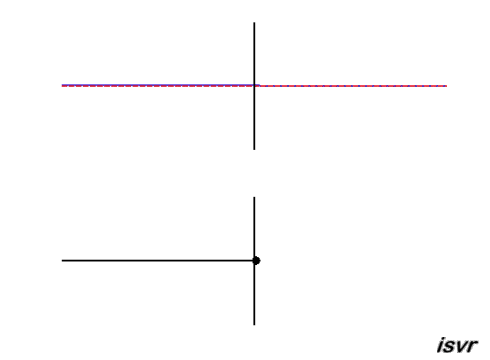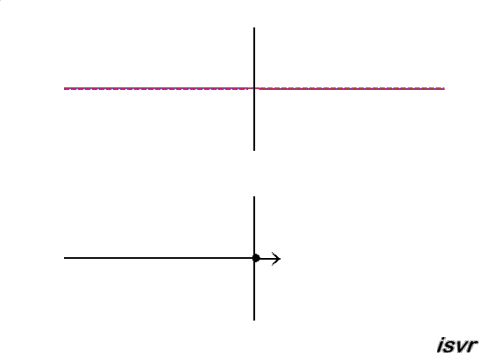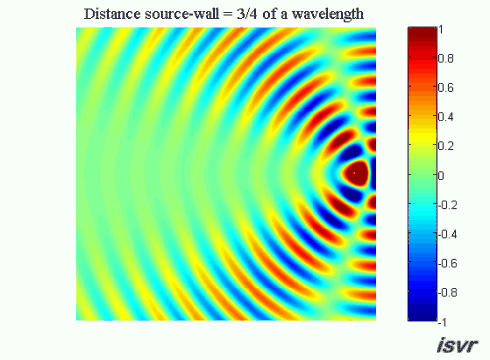One dimensional case
The following animations illustrate how a
wave is reflected when travelling until it reaches either a fixed or a free
point. The animations show the reflected wave (the black line) as well as
its components (the red and blue lines).
●
Reflection of a transverse wave in a string which is at a fixed end: At the fixed end,
the displacement of the string remains zero and the reflected wave is a
negative displacement. A reflected wave pulse then propagates from right
to left, with the same speed and amplitude as the incident wave, but with
opposite polarity (the positive displacement of the string is reflected as
a negative displacement).

●
Reflection of a sound wave at a hard wall: At the
wall there can be no particle motion, but the pressure can, and will, vary. The reflected wave pulse then
travels from right to left, with the same speed and amplitude as the
incident wave, but this time with the same polarity (the positive
displacement of the string is reflected as a positive displacement).

Three dimensional case
We now consider a three
dimensional acoustic source located next to a rigid wall. Without the
wall, the sound waves would travel outwards away from the source
indefinitely. Because of the wall, a reflected wave appears and interferes
with the incident wave.
If the distance between
the source and the wall is equal to a whole number of half
wavelengths, then on the left side of the source the circular wave will
interfere in phase with the reflection from the wall increasing the wave
crest. This animation shows the corresponding pattern:

Now suppose that the distance between the source and the wall
is equal to an odd number of quarter wavelengths (an integer number of
half wavelengths plus a quarter of a wavelength). In this case on the
left side of the source the waves will be out of phase and we see
a wide 'valley' where the amplitude of oscillation is reduced.

|